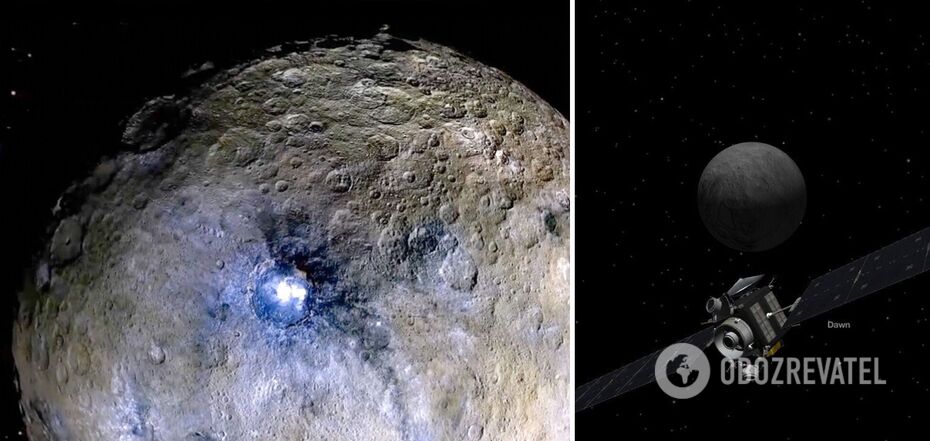News
Molecules necessary for life discovered in water on a dwarf planet of the Solar System
Organic compounds that are essential for the formation of life have been discovered on Ceres, a dwarf planet in the inner solar system. At first, scientists assumed that they could have been brought in as a result of an asteroid impact, but it turned out that this was not the case.
The results of the study were presented at the Geological Society of America's GSA Connects 2023 meeting, IFL Science reports. Last decade, Ceres was visited by the Dawn mission. Then the NASA spacecraft discovered that it has complex organic matter, possible volcanism with salt eruptions, and a large amount of water ice.
In 2017, scientists studying data sent by NASA's Dawn spacecraft first noticed organic compounds known as aliphatic molecules. They were found near the impact crater, which is almost 52 kilometers wide.
The origin of the organic matter was not immediately clear to scientists. The first thought was that it came to the dwarf planet along with a carbon-rich asteroid. This version was indirectly confirmed by the fact that the organic matter was found near the crater.
"That's what prompted us to look at how collisions affect this organic matter," said Terry Daly, a planetary scientist at the Johns Hopkins Applied Physics Laboratory.
Further investigation, however, revealed that the organic matter originated from Ceres.
"We found that the organic matter may be more widespread than previously reported and that it appears to be resistant to conditions similar to those on Ceres," the scientist said.
As part of the study, scientists recreated the conditions of a collision with the surface of Ceres in the laboratory. To do this, the researchers used the NASA Ames Vertical Gun Range. It is designed to simulate the physics and mechanics of crater formation during collisions with asteroids. The impacts occurred at speeds of 2 to 6 kilometers per second and at angles of 15 to 90 degrees.
The experimental data provided important information, but another confirmation was needed.
Then the scientists combined two different data streams from NASA Dawn - camera and spectroscopy data. This allowed them to obtain a more detailed map of the location of organic matter on the dwarf planet.
Together, these studies confirmed the idea that the organic matter comes from inside Ceres.
The Dawn mission's data had been studied before, but no one had combined the camera and spectrometer data. Therefore, it was the extrapolation of the data that helped scientists find the truth and understand the origin of organic matter on Ceres.
Earlier, OBOZ.UA reported that, according to NASA scientists, shadowed craters on the Moon could be home to microbial life.
Subscribe to the OBOZ.UA channels in Telegram and Viber to keep up with the latest events.



























